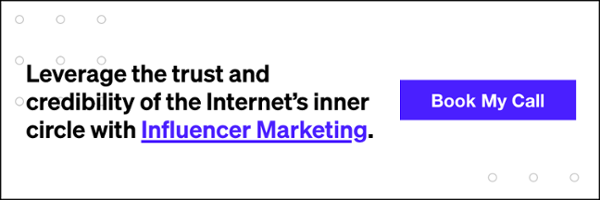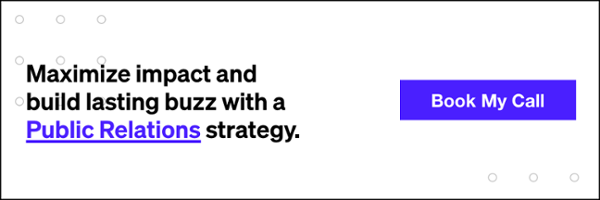It’s pretty crazy to look at how far influencer marketing has come in the past year, and even in the past six months. As an agency, we have the opportunity to run influencer campaigns for clients with big budgets, clients with small budgets, and clients in many different spaces, from lifestyle, to food, to pet. This means we pretty much see it all and can glean a lot of lessons from 2017 and get a big picture of how this market is evolving.
What’s The Buzz About Influencer Marketing?
Influencer marketing has established itself over the past few years as a marketing channel that businesses should be paying attention to. Considering it is essentially another form of advertising, ad dollars are being reallocated from traditional print advertisements to digital marketing, which now includes influencer marketing. While celebrity endorsements still exist, the rise of social media influencers continues, which an emphasis now on the opposite of a celebrity, specifically, micro-influencers. Micro-influencers are smaller influencers on social media with anywhere from 5,000 to 100,000 followers on one channel. They’re effective because they are more affordable to work with, they have a highly-engaged audience, and they create great content.
Related: Why Your Brand Needs to Work With Microinfluencers
We’ve learned a lot over the past year about influencer marketing, but here are the top five lessons we’ve learned in 2017 from executing on influencer campaigns for our clients.
Influencers know that they can charge now, which isn’t new, but the caliber of influencer that is charging now is pretty shocking. One would expect to pay a celebrity the big bucks for a product endorsement, but what about someone on Instagram who has 10,000 followers? Today, those micro-influencers are charging too.
There’s a movement going on within the influencer community to “know your worth” now that the industry has become so prolific. A year ago, as an agency, we were able to negotiate with micro-influencers to post in exchange for product, which is also known as a gifting campaign. Today, those same influencers within that tier are charging, and many of them are not cheap. Some are even charging hundreds of dollars for a single post.
Why is this? It’s simply supply and demand; the demand is high and the supply is the same pool of influencers who are being inundated by brand requests, so prices are increasing because they can and because there is a need. From the influencer perspective, let’s say that an influencer gets one brand collaboration request a day for a month and each collaboration entails one social media post or one blog post.
This would mean that every single day of the month they are posting about brands. Authenticity is the second biggest buzzword behind micro-influencer in 2017, and it’s why these influencers are charging. Charging allows influencers to be more selective with the brands they work with, because not every brand has a budget. In turn, it makes the influencer look more authentic when they have room for non-branded, non-promotional content.
Many influencers and bloggers use their influence as their complete source of income. Blogging has become a full-time job, and now, even one social media platform like Instagram or YouTube has become a full-time job for influencers.
This doesn’t mean that every single influencer out there charges. Especially if your product is something they already know and love or is something that has a higher price point, negotiation and gift exchange is definitely doable. What we’re saying is that you will not see a ton of success with influencers if you have zero sponsored budget. We recommend starting with $1000 per month in sponsored budget if you’re working with micro-influencers. If your goal is to work with higher-tier influencers, then you will have to drastically increase that budget.

Pricing Is Inconsistent – Many Influencers Are OVER Charging
If you read an article on influencer marketing or listen to a podcast on the topic, it will probably mention that pricing for influencers is “the wild wild west.” This is a pretty accurate statement. Influencers with 50,000 followers might charge nothing, while influencers with 20,000 followers might charge $1,000 for one social post.
This comes with a few issues. First, you don’t know what the return is going to be for this investment. Second, you can’t easily compare influencers based on number of followers or number of likes. Third, you don’t know what a “fair” price really is.
The only way to really know if a price is reasonable or not is to be fully in the weeds with influencer marketing campaigns and reaching out to new influencers on a daily basis. This is one of our strongest assets in our PR department at Power Digital. We know what hundreds and even thousands of influencers charge and can gage whether or not something is reasonable based off of their number of followers, engagement rates, and the quality of their posts.
Once you’ve done some outreach to influencers of different following sizes, you’ll start to learn what makes a great influencer who is worth it to pay a sponsored fee. Off the bat, on Instagram specifically, we believe you shouldn’t pay someone to post about your brand if: 1) they have a large following of over 10,000 but get under 200 likes on their posts (this means they have poor engagement and is a red flag for purchased followers), 2) they get a solid amount of likes but no comments (this means they could be purchasing likes and don’t have a community that interacts with them), 3) they don’t post any other brand collaborations (this means they may not have experience with brand partnerships and might be playing hardball and testing you with a sponsored fee to see if you’ll say yes) and 4) their photo quality is subpar and you wouldn’t be eager to re-post one of their photos.
The key to success when paying influencers is finding someone who has a great engagement rate, interacts with their followers in comments, works with other brands, and produces amazing content. If they don’t match up to these standards, don’t pay them! If you thought an influencer might accept a gifting campaign but is charging a large fee, they might be over-charging you and this is your opportunity to negotiate! Pro tip: you can always negotiate with influencers on pricing.
I’ve personally had influencers with low followings and not great engagement rates get back to me on gifting campaigns charging hundreds of dollars for a post that I know would not be a good investment for the brand. This shows me that there are brands and agencies out there who are paying them these sponsored fees, which comes as quite a shock to our team. You ultimately don’t have to work with everyone and if you’re hesitant to pay an influencer, there are always other options.
Related: How to Perfect Your Influencer Marketing Strategy
Engagement Is Everything
Follower count doesn’t really matter. If an influencer has poor engagement, then it means people are not seeing their posts due to the Instagram algorithm that prioritizes posts from only the people you engage with. It could also mean the influencer purchased followers, which means their reach isn’t to real people.
I’ve worked with influencers with 2,000 followers on Instagram who have incredible content and get over 300 likes on their photos, and I’ve worked with influencers who have 10,000 followers and get 300 likes on their photos. I’d rather work with someone with a lower overall following that has great engagement and great content. You get a smaller overall reach but they have a highly-engaged audience and you’re able to repurpose their photos as user-generated content on social.
Instagram Pods Are Inflating Engagement Metrics
If you’re not familiar with Instagram pods, they are groups of influencers who typically post similar content and have similar reach who have a private message where they each share when they’ve posted a new piece of content on Instagram and then the group goes and comments/likes their post.
The reason pods started in the influencer community is because the algorithm update (similar to how Facebook operates) hurt a lot of influencers’ likes and comments engagement rates, which is a big make or break in brand collaborations, especially when they’re sponsored. Influencers with huge followings were getting significantly less likes and comments after the update because their followers weren’t seeing their posts chronologically, but instead only seeing posts from people they regularly engage with.
Pods became a way for influencers to boost their engagement with guaranteed likes and comments. Pods also help posts “go viral” on Instagram and are visible to more followers when people start liking and commenting on the post as soon as it goes live. So, with pods, influencers are boosting their engagement
The issue with pods is that brands might think these influencers have an audience that clings to their every word and brand recommendation based on the comments, while it’s really just other influencers and bloggers who probably want to be paid in product or sponsored by your brand rather than purchasing something themselves. The easiest way to tell if an influencer is in a pod is if you notice the exact same people commenting on their posts, with little to no other comments. As long as there are other people engaging who aren’t just bloggers or influencers, you should be good to go.
This is a rule of thumb that does have exceptions. Pods are not completely negative and I can attest to the fact that I’ve recently purchased a piece of clothing directly through an Instagram post and affiliate link from an influencer when I can tell she does participate in pods but also has an overall engaged audience. There is definitely opportunity to generate sales from influencers who appear to be participating in pods but it is something to be weary of.
You should be taking full advantage of using links in Instagram Stories with every influencer partnership if the focus is on Instagram. If it’s on YouTube you should also be using linking within the video description. With Instagram Stories’ “swipe up” linking feature, you can create a UTM to the brand website and track sessions as well as see conversions and conversion value on ecomm websites.
Overall brand awareness is one component and goal of influencer marketing, but direct sales should be too. We have seen new sessions driven through Instagram Stories to our clients’ websites when we create a UTM for each influencer partnership and require as part of our campaign agreement for them to include the link in their Stories. On top of the visibility into number of new sessions that Google Analytics gives campaigns when you’re using a UTM code, you can also see how many of those sessions are new versus returning, how much time the users spent on site, how many pages they viewed, and if they completed a conversion, whether it be they checked out on an ecommerce site or they filled out a form on a lead generation site. This allows you to actually see direct sales and dollars coming from influencer campaigns, which clients want to see.
Wrapping Up 2017 And Heading Into 2018
The number one thing you should consider before kicking off any influencer campaigns is who are the influencers you want to target based off of your target audience and demographics. Think about not only who the influencer is, but also what type of person is following them. The research phase is the most important step for influencer outreach.
Once you kick off your outreach, you’ll be able to start getting a sense of what pricing looks like and it will help you better compare influencers. Remember, you can always negotiate or bundle series of social and blog posts for a more affordable package deal. Hopefully this helps you better navigate the coming year with some takeaways we’ve learned in 2017.









